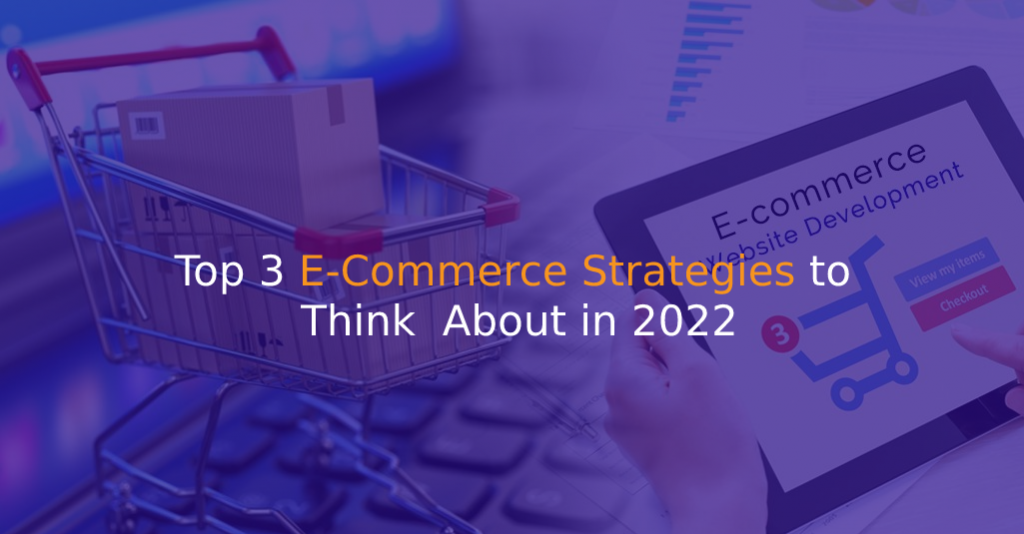A strong e-commerce ecosystem has become a must-have strategy for all retail organizations. Whether it’s a little local shop down the street or an international corporation, making sure clients have as many purchasing alternatives as possible is critical.
Brands can contact customers internationally, 24/7, and with cheap maintenance costs thanks to a flourishing e-commerce business. This, however, brings more competitiveness and a critical requirement for logistics on delivery and returns. Most essential, firms must ensure that they create a robust e-commerce ecosystem regardless of whatever path they select.
What Is the Global E-Commerce Market Growth In 2022?
This year, the worldwide e-commerce market value increased to $4.921 trillion, and 230.5 million Americans are expected to be online consumers who have browsed items, compared prices, and purchased merchandise online at least once. Despite this, a recent survey found that an astounding 80 percent of US small firms are not fully utilizing digital technologies. This creates a significant void in the e-commerce ecosystem, which firms may learn to fill to maintain their long-term sustainability.
So, how can businesses build this e-commerce ecosystem while remaining confident that they are reaching all potential customers? There are three main alternatives for businesses to consider, and the method they adopt will be heavily influenced by how digitally advanced they are.

The Golden Direct-to-Consumer
This only includes a company’s own e-commerce site, which provides a direct-to-consumer (DTC) method for a brand and allows for a direct channel to customers. This method provides the company complete control over their own e-commerce but ignores other potentially important channels, whether online or offline.
Many buyers, on the other hand, are more motivated to buy directly from brands and shops they know and trust to secure product authenticity and customer warranty. Direct contact also gives organizations the data they need to uncover fresh customer insights. DTC activities may also aid with innovation and digital transformation, increasing the business’s overall speed and agility. We frequently notice a tendency here where some firms attempt to go DTC without using any other e-commerce channels.
Retailers Only
A second alternative is to collaborate only with retailers or indirect channels to create an e-commerce landscape, so removing the brand’s own DTC strategy. The disadvantage of this is that it leaves a brand without a direct channel to its customers, resulting in inadequate data and insights. A retailer-only strategy limits the brand’s ability to optimize the user journey, make adjustments to product display, or give consumer discounts.
Nonetheless, this strategy is ideal for firms that are just getting started and have minimal brand recognition. This is also a popular option for individuals who are not ready to spend in developing their own e-commerce channel.
Omnichannel is King

Omnichannel (a mix of the two) is the most efficient strategy to ensure a strong e-commerce environment for any brand or business. This method combines the benefits of both direct-to-consumer (D2C) and a retailer- or indirect-channel-only approach. This ensures that, above all, you are serving the consumer and giving them the most convenient purchasing alternatives, rather than losing a client to a rival or failing to get insights into the purchase process.
Many businesses are hesitant to become fully omnichannel because they are concerned about channel conflict, whether from their own channels or retail partners. Adopting an omnichannel approach, on the other hand, is mutually advantageous for companies, retail partners, and customers, rather than producing channel friction. An omnichannel approach streamlines the customer’s journey from touch-point to touch-point, ensuring they make their purchase via the channel that is most convenient for them. Isn’t that what it all ultimately comes down to?
Wrapping Up
Overall, in today’s retail ecosystem, marketers must focus less on which channel is ideal and more on how various channels interact with one another. Consumers want to be able to buy items in the most convenient method possible. Following the present e-commerce sales peak and projected growth through 2022, there has never been a more critical time to construct a successful e-commerce ecosystem, and there is adequate technology available to enable this omnichannel commerce.
Each e-commerce method has advantages and disadvantages, but we believe the future lies in a streamlined omnichannel system that combines the greatest features of e-commerce and retail, putting the ‘which is best’ discussion to rest. While different paths suit firms at different levels of digital maturity, adopting an omnichannel strategy is a sign of a completely mature and forward-thinking organization.
iStudio Technologies, the best e-commerce website design company in Chennai provides eCommerce services to help companies create and maintain their digital presence, like eCommerce web design and development, eCommerce social media advertising, and many more.
Contact us today to learn about how to customize your company to the evolving market environment.



